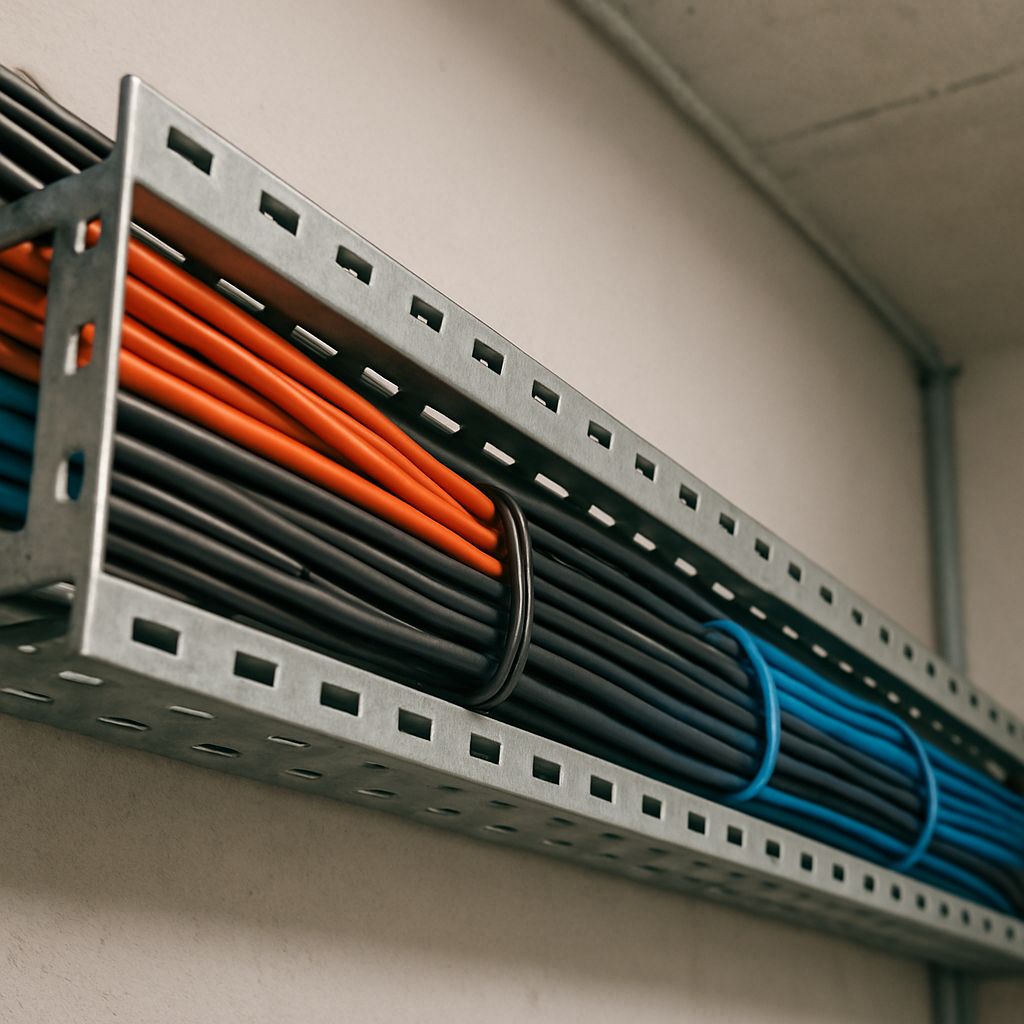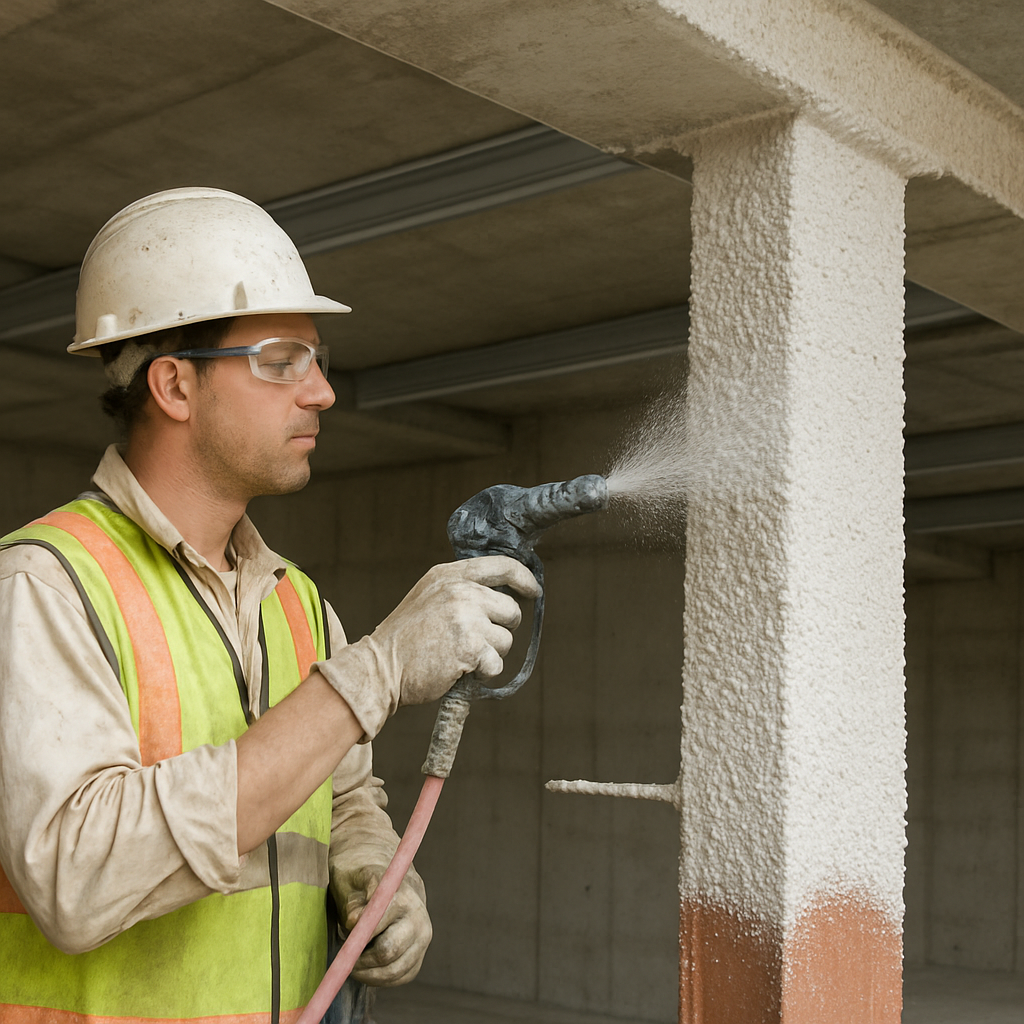In the world of industrial and commercial facilities, cable trays are essential for organizing and supporting electrical cables. However, they also present a significant fire hazard if not properly managed. Understanding the potential risks and implementing effective fire safety measures is crucial to preventing cable tray fires. In this guide, we will explore fire protection materials, systems, and strategies to ensure cable tray fire safety.
Cable trays, often filled with numerous cables, can be a fire hazard due to the combustible nature of the materials involved. The insulation on cables, made from plastic or rubber, can catch fire under certain conditions. Once ignited, the fire can spread rapidly through the sistema de bandeja de cabos, posing a risk to the entire facility.
Common Causes of Cable Tray Fires
- Overloading: Excessive electrical load can lead to overheating, which may ignite the cable insulation.
- Poor Maintenance: Accumulated dust and debris in cable trays can act as fuel, increasing fire risks.
- Faulty Installation: Incorrectly installed cables or trays can cause electrical faults, leading to fires.
- External Heat Sources: Exposure to external heat or open flames can ignite the cables.
Fire Protection Materials for Cable Trays
Implementing the right fire protection materials is a key step in safeguarding cable trays from fire hazards. Here are some commonly used materials:
Fire Barriers and Fire-Rated Cable Trays
Fire barriers are materials used to prevent the spread of fire and smoke. Installing fire barriers around cable trays can help contain a fire, limiting damage and allowing more time for evacuation and firefighting efforts. Fire-rated cable trays are designed to withstand high temperatures, offering additional protection.
Fireproof Coatings and Insulation
Applying fireproof coatings to cables and trays can significantly reduce the risk of fire. These coatings can withstand high temperatures and prevent the flames from spreading. Additionally, insulation materials can be used to cover cables, providing an extra layer of protection against heat and fire.
Firestop Solutions
Firestop solutions are materials and systems designed to seal openings in walls and floors, preventing the spread of fire and smoke. In cable trays, firestop solutions can be applied at entry and exit points to limit fire propagation.
Implementing Fire Protection Systems
Fire protection systems are crucial for detecting and extinguishing fires in cable trays. Here are some systems that can enhance cable tray fire safety:
Automatic Fire Suppression Systems
Automatic fire suppression systems can quickly detect and extinguish fires before they spread. These systems often use gas, foam, or water mist to suppress flames, minimizing damage and downtime.
Smoke and Heat Detectors
Installing smoke and heat detectors near cable trays can provide early warning of potential fires. These detectors can trigger alarms and activate fire suppression systems, allowing for a prompt response to fire incidents.
Best Practices for Cable Tray Fire Safety
Implementing best practices is essential to maintaining cable tray fire safety. Here are some recommendations:
Regular Inspections and Maintenance
Conduct regular inspections of cable trays to identify potential hazards, such as overloaded cables, accumulated dust, or damaged insulation. Regular maintenance can prevent issues that may lead to fires.
Proper Cable Management
Organize cables neatly within the trays to prevent overheating and ensure proper airflow. Avoid overloading trays and adhere to load limits specified by manufacturers.
Training and Awareness
Educate employees on fire safety practices and the importance of cable tray maintenance. Conduct regular fire drills to ensure everyone knows how to respond in case of a fire.
Choosing the Right Cable Tray Fire Protection System
Selecting the right fire protection system for cable trays depends on several factors, including the type of facility, the cables used, and the potential fire hazards. Here are some considerations:
Assessing Fire Risks
Conduct a thorough risk assessment to identify the specific fire hazards associated with your cable trays. Consider factors such as the types of cables, the environmental conditions, and the facility layout.
Consulting with Experts
Work with fire safety experts to design and implement a comprehensive fire protection plan tailored to your facility’s needs. Experts can recommend the most effective materials, systems, and strategies for your specific situation.
Conclusão
Cable tray fire safety is a critical aspect of maintaining a safe and secure facility. By understanding the potential hazards and implementing effective fire protection measures, you can significantly reduce the risk of cable tray fires. From using fire barriers and fireproof coatings to installing automatic fire suppression systems, there are numerous strategies to protect your facility and ensure the safety of your employees. Prioritize regular inspections, proper cable management, and employee training to maintain a fire-safe environment.
Remember, investing in cable tray fire safety not only protects your infrastructure but also ensures the continuity of operations and the safety of your personnel. Take proactive steps today to safeguard your facility from the threat of cable tray fires.



